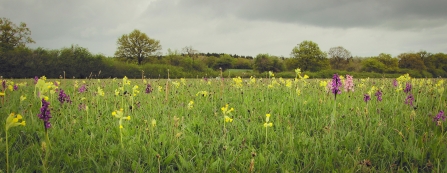| We amended this press release on 22 June 2020 to clarify our position on the Growth Arc and associated Expressway plans. The original release on 15 June 2020 should have set out our position more clearly and we apologise for any confusion it caused. |
Berkshire, Buckinghamshire and Oxfordshire Wildlife Trust (BBOWT), the Wildlife Trust for Bedfordshire, Cambridgeshire and Northamptonshire (WTBCN), the RSPB, and the Woodland Trust have jointly published a set of principles for protecting and restoring nature and tackling climate change if large-scale developments get the go-ahead in the Oxford-Cambridge Growth Arc.
Berkshire, Buckinghamshire & Oxfordshire Wildlife Trust has long campaigned against the Government’s proposals to build an Expressway between Oxford and Cambridge and has also fought plans to build a million new homes across the area without the proper public consultation and assessments taking place.
However, as the March 2020 budget indicated, the Government plans to press ahead with some level of growth. The nature charities have published their set of principles, Nature’s Arc, to highlight their concern that growth must not be at the expense of wildlife and precious natural greenspaces.
The key principles are:
- Existing nature must be protected. Government must carry out an environmental assessment of the Arc proposals as a whole, protect existing sites and avoid the loss of irreplaceable habitats.
- Nature must be restored across the arc. Government must establish a Nature Recovery Network to create bigger, better, and more connected places for wildlife.
- New standards must be set for sustainable development. It must all be carbon neutral, nature-friendly, and improve the lives of residents.
The charities are calling for any plans within the Arc to be subject to a Strategic Environmental Assessment involving public consultation, so that the full impacts of plans can be seen and discussed. To date, the plans have developed in a piecemeal way preventing proper scrutiny. Nature’s Arc principles require plans to be made public so they can be challenged where necessary and nature put first. Any development that takes place across the Arc must avoid damaging nature, and instead be actively beneficial.
The Nature’s Arc principles emphasise the importance of access to nature and natural greenspace for the health, well-being, and resilience of people and communities. Using these principles, Government can make a commitment to a new standard for sustainable development that will benefit wildlife, tackle climate change and build healthier neighbourhoods for people.
Investing in nature and increasing and enhancing the region’s “green infrastructure” – its parks, trees, woodlands, nature reserves and other natural green spaces – would benefit local people, the economy and the environment, making the Arc a better place for people to live and work, and for businesses to invest.
The Nature’s Arc principles can be downloaded on the RSPB website.


